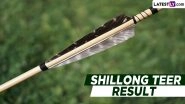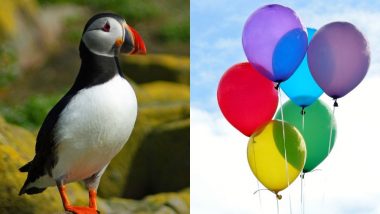Seabirds are mistakenly feeding on balloons resulting in their death. According to researchers, gut contents of dead seabirds have been identified with things including balloon debris. While an earlier study said that only 5% of plastic is consumed by albatrosses and other birds result in their death, a new study states that it has caused 40% of deaths. Researchers at the University of Tasmania in Australia stated that while harder plastic articles pass quickly through the gut, softer pieces cause blockages. Scientists said that one in five birds that consumed balloons died.
Researchers said that due to the rich diversity of seabirds in south-eastern Australia and south-west of New Zealand, the consequences of marine plastic pollution is also more there. PhD student Lauren Roman, who led the study said, "Among the birds we studied, the leading cause of death was blockage of the gastrointestinal tract, followed by infections or other complications caused by gastrointestinal obstructions. Balloons or balloon fragments were the marine debris most likely to cause mortality." Turtles From All Seven Oceans in The World Have Microplastics in Their Body! New Study Reveals Shocking Extents of Plastic Pollution.
While the study published in Scientific Reports say that the balloons did not have markings Roman, from the CSIRO and the University of Tasmania, says they were mostly party balloons. She said, "We found a balloon that actually had some branding on it, and we traced it back to an event in Sunnybank (in Brisbane). Most likely that was one that a kid had let go." Baby Turtle Poops Plastic That it Swallowed in The Ocean, Watch Shocking Video.
They compared birds that died due to various reasons including fishing bycatch, infant mortality and disease to those by eating plastic. The research concluded that among birds those died from eating plastic, ones that swallowed balloon remains were 32 times more likely to die than birds that had only eaten hard plastics. The reason for more birds consuming balloons could be the smell of the substance. According to researchers, birds may be alos mistaking it for squid due to the resemblance. Plastic Pollution: Photographer Captures a Bird Offering Plastic Waste as a Mating Gift to Partner.
Dr Mark Hamann from James Cook University said, "Balloons are made from a polymer that will persist in the environment for a long time. Developing polymers to replace those plastics is an increasingly interesting research avenue now."
In 2018, Dr Eric Woehler from Birdlife Tasmania who has been with CSIRO vessel, RV Investigator observing sea birds and marine mammals told ABC, "The concern about these balloons in the ocean environment is that when they eventually deflate or when they're punctured for whatever reason, that fragments of the balloon will be seen as potential food by albatrosses, by turtles. There's a real risk that these balloons that have been released from the mainland that have drifted 250 kilometres over the ocean will end up in the stomach of seabirds or turtles."
(The above story first appeared on LatestLY on Mar 02, 2019 02:26 PM IST. For more news and updates on politics, world, sports, entertainment and lifestyle, log on to our website latestly.com).













 Quickly
Quickly


